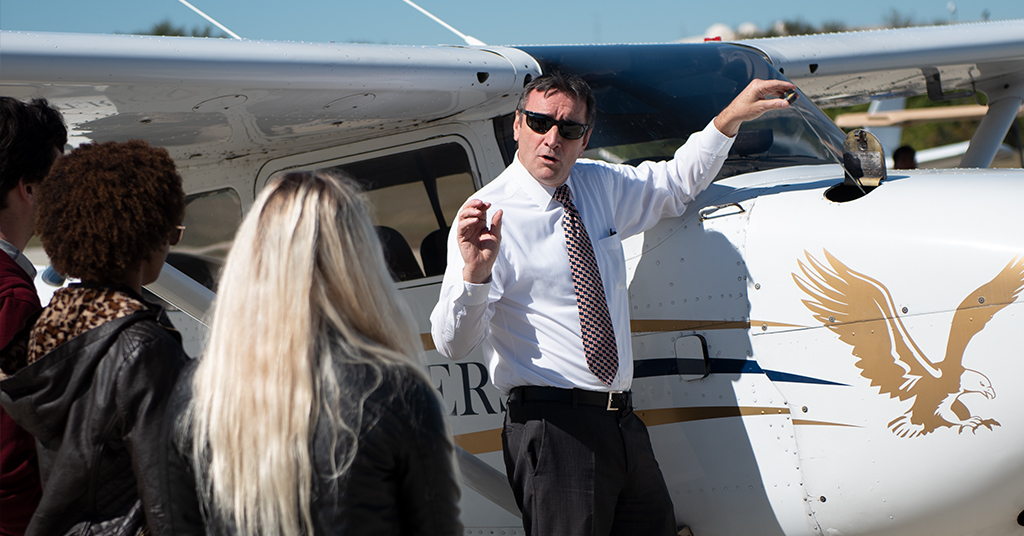BY STEVEN DAUN, NATIONAL CHIEF PILOT
You are flying IFR on the last hour of what has been a five-hour IFR flight. The weather is poor, it’s cold and bumpy, and you have a couple of passengers who are getting nervous. Suddenly, one of your annunciator lights comes on indicating that there is a problem somewhere on your airplane. Between being tired and distracted, how can you ensure that you are properly prepared to deal with the situation?
Webster’s Dictionary defines standardization as: “to bring into conformity with a standard especially in order to assure consistency and regularity.”
While the definition is valid, it only tells part of the story. The other part of standardization in aviation is programming muscle memory into your body.
Richard Marcinko coined the phrase, “The more you sweat in training, the less you bleed in battle.” We can take this quote and apply it to flight training. “The more you sweat in training, the less stressed you will be if an emergency occurs during a flight.”
For the purpose of a basic-level discussion, we can break standardization down into three parts as follows:
1) Human factors
2) Equipment
3) Environment
HUMAN FACTORS
Human factors include reactions, responses, actions, decision making, and physiological aspects of you, the pilot, and your passengers. We know that there is much less stress when a pilot experiences an emergency if they were trained for it compared to if they are facing it for the first time. You should encourage your instructor(s) to take you through a series of what-if scenarios in a simulator or aircraft (if they can be conducted safely). These may include engine issues, lost coms, fires… This can even include discussions based on “what would you do if?”
Many nonprofessional pilots experience some sort of concern or anxiety when they fly, especially in IFR, because they aren’t fully confident as to what they would do if faced with a different emergency or non-normal situation. This means that many will only address the issue when it presents itself and hope for the best.
EQUIPMENT
Different airplanes have different avionics configurations, systems, and flight characteristics. What may work for one type of aircraft or avionics setup may not work for another. How well do you know the systems of the aircraft that you will be flying? Your preparation for VFR flight may be quite simple. However, if you are going to fly that airplane into IFR conditions or at night, you may want to know and understand much more.
ENVIRONMENT
Are you flying in the wintertime, summertime, daytime or nighttime? What about cold weather vs. warm weather? Are you prepared to deal with the changes that come with a changing environment?
As basic as many of these observations and questions are, they can become quite significant when they are combined or if you are not well prepared.
Now how do you take your next step?
Just as a flight department or airline has procedures for standardizing their pilots’ operations, you should too. This can be as simple as reviewing winter flying techniques or scheduling time in a simulator with an instructor every three to six months to maintain your proficiency and emergency procedures.
It sounds easier said than done, right? No, it is easy to set up your own personal standardization program. Here is how you start if you are a private pilot without an instrument rating:
Open your calendar and find your first two free hours of time. Call your local flight school and ask to schedule a two-hour simulator block with an instructor to focus on emergency procedures and systems.
Flip the pages to six months later and schedule the same thing again. Only this time, add in some lost procedures as well as some basic instrument skills. You may also want to do some work in the airplane such as ground reference maneuvers, flying to different airports, transitioning various types of controlled airspace…
If you are an instrument rating pilot, you may want to have the instructor work with you on different types of approaches, partial panel and lost com procedures.
In addition to these sessions, you can begin to create your own “standards” manual. This might include various forms that you like to use, as well as specific information about your aircraft, airports or other unique topics.
You may be saying that this does not apply to you because you aren’t flying for an airline or corporation, but in a sense, you are. When you are operating your own airplane, you are operating as your own flight department. Just think of the operational safety enhancement that you can bring to your own flying by doing it on a more professional level.
Why do flight departments have a standardization process? They primarily have a standardization process to ensure that their operations and procedures are consistent regardless of the pilot, airplane or situation. It ensures that many of the tough and unique decisions have been thought about and dealt with prior to experiencing them. It lays out a standard protocol to ensure that the pilot(s) and or the aircraft are not put in a position outside of their capabilities. It also ensures that regardless of the time of day, month or year, the skills and capabilities of the pilot have not diminished. In other words, it will keep you safe and proficient despite yourself.
Several pilots over the years who have taken this advice and own their own aircraft have even reported discounts on their aircraft owner’s insurance.
If you own a business, you most likely have a strategic plan for your business, a plan that outlines your goals and how to achieve them. Think of a standardization process as a business plan for your flying.
American Flyers has several programs to help you set up your own personal standardization program. A great place to start is with our Silver Seal Day.










